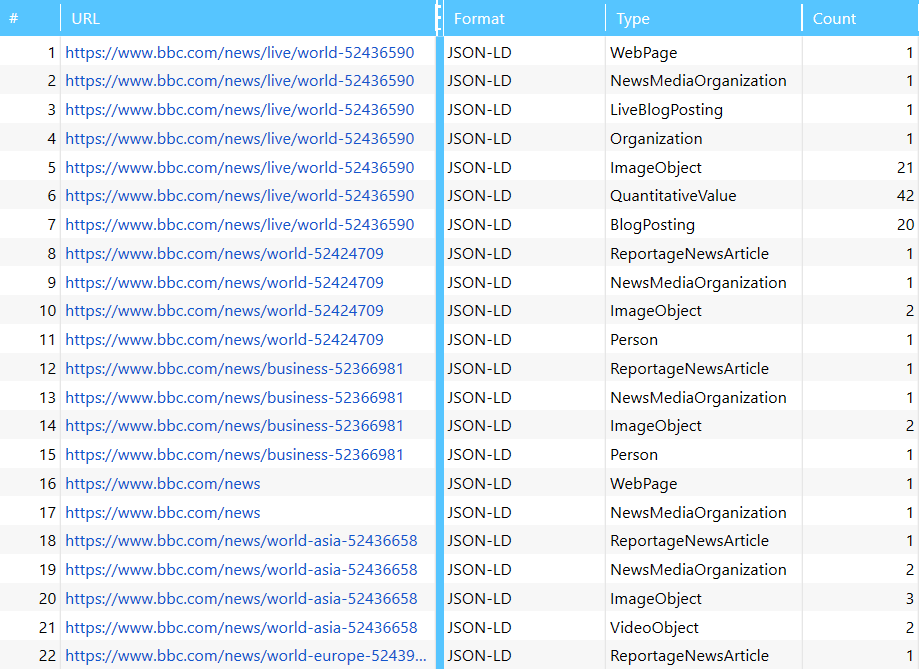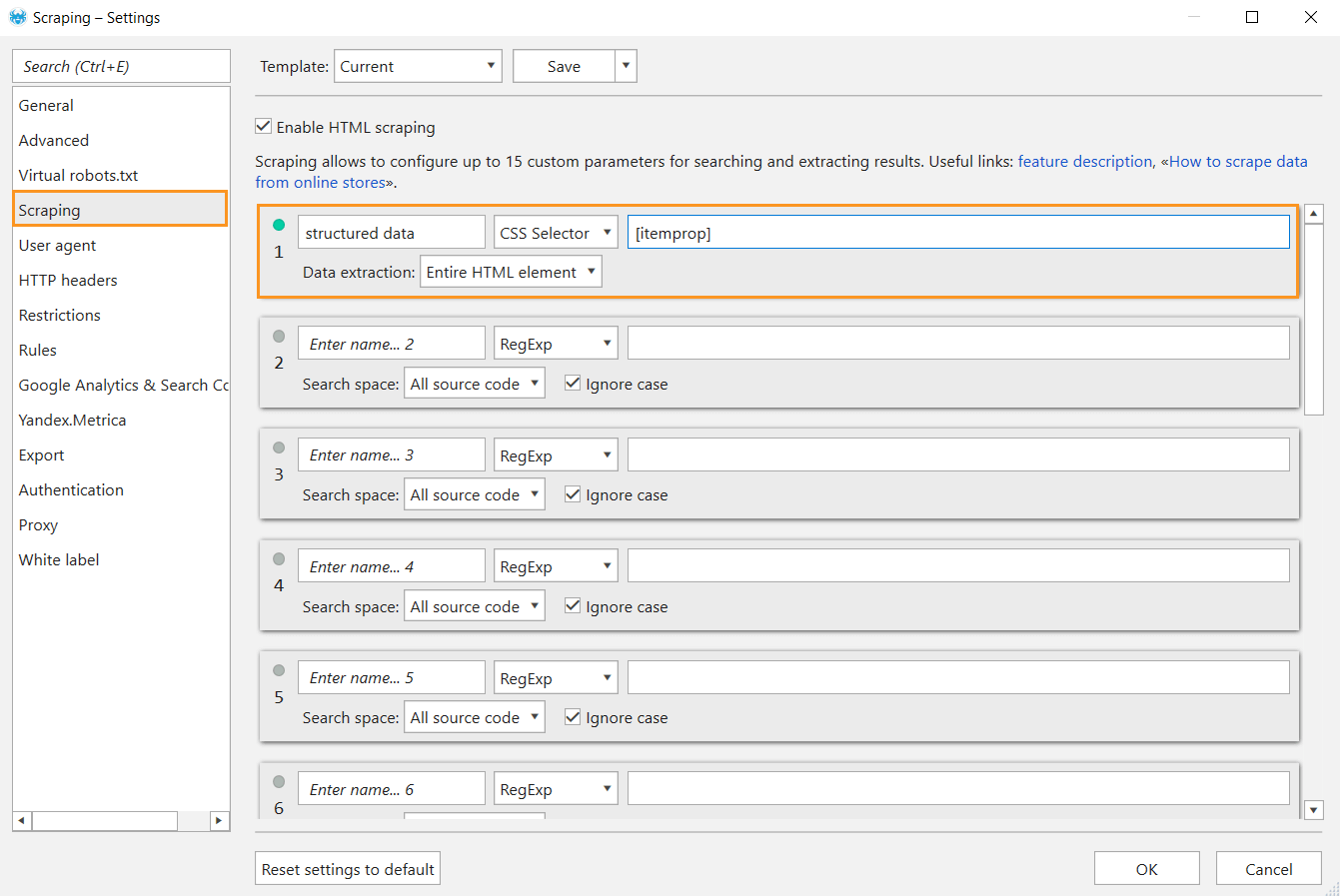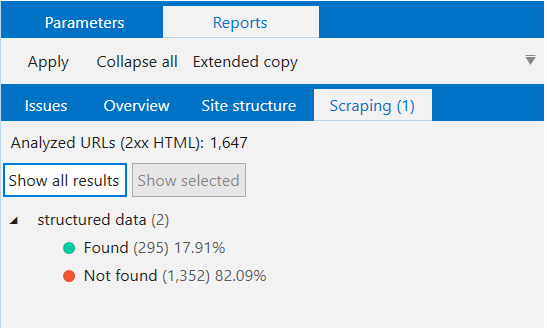What Is Structured Data, and How It Benefits SEO
How to
In order to improve QDD (Query Deserves Diversity) and attract more traffic to a site, you can use various methods. Probably you have already tried the majority of them, but haven’t achieved the desired result yet. Pay attention to how your competitors’ snippets look in the SERP. Is your page preview anyhow different from their ones? If it isn’t, it’s high time to take into consideration the implementation of structured data (also known as schema markup) on the pages of your website. In this blog post, you’ll learn what it is, and how to do it efficiently.
- 1. What Is Structured Data?
- 2. The Advantages of Structured Data
- 3. What Does Structured Data Consist Of?
- 4. Structured Data Vocabularies
- 5. Structured Data Syntax
- 6. Google Structured Data
- 7. How to Check Structured Data
- In a Nutshell
1. What Is Structured Data?
The structured data (also known as schema markup) is the markup which helps to furnish search robots and site visitors with more information by deploying additional tags and attributes to HTML.
Moreover, rich snippet looks more catching in the SERPs, which means users are more likely to click on it. This is the reason why structured data contributes to a higher CTR.
2. And more about CTR in SEO, how to calculate and improve it: 'What Does CTR Mean in SEO?'.
2. The Advantages of Structured Data
Among all main benefits of the structured data, I’m going to highlight the following ones:
- Attractive snippet. In search results pages, it will stand out from all other existing competitors.

- Spotlighted information that should be crawled by search engine robots.
- The detection of a page type by web bots. They will be able to understand the difference between contact pages, product descriptions, recipes, events pages, and so forth.
3. What Does Structured Data Consist Of?
It incorporates the set of tags and attributes with specific content. Some of them are crawled by search robots, others are shown to users. With structured data you can supply a snippet with:
- review
- image
- photo
- rank
- product in stock
- contact details
- breadcrumbs
- time and date
- product description
- recipe and many others

Let’s imagine that you want to point out contact details on one of the pages. All you need is to add the strings including the names of a dictionary and syntax to the HTML of a page. When a search engine bot visits your site again, they will notice the instructions that you have made for them in advance using the structured data. If it’s implemented properly, search engines will place the relevant information in featured snippets.

Structured data is valuable for every online shop – you can add data concerning any item. If a user types in ‘iPhone 11’, a search engine will show the snippet containing the description of the selected phone, reviews and other material. At the same time, you choose what data to display in search results pages on your own.
4. Structured Data Vocabularies
The structured data consists of a dictionary and syntax. The dictionary determines the classes and features that should be included while moving content from a page to search results. The syntax also is full of the tags and attributes describing entities. The entities are the code components that have got specific and unique features. The entities differ by condition and operation types that can be carried out on them.
Since the very creation of the structured data, diverse dictionaries, and syntaxes have been established. Let’s have a look at the most popular ones.
4.1. Schema.org
It has been supported since 2011 by such digital giants as Google, Yahoo, Bing. The dictionary is considered to be international and is being constantly developed by people all over the world. Using Schema.org, webmasters build attractive snippets stressing valuable item features.

The description of data types in the dictionary has a tree structure. There are hundreds of classes which are used to describe different objects. Each of them has a separate standard meta tag:
- itemtype is the type of the object from the dictionary list. Thing is more often used and has its own subtypes: Action, CreativeWork, Person, Product, and others.
- itemscope is the information about a certain object described in this piece of code.
- itemprop is additional data concerning an object. For example, a video duration, the time when an event begins.
The piece of code with Schema.org metatags has the following structure:
4.2. Open Graph
This is one more worth exploring structured data dictionary which is aimed to display Facebook posts correctly. With Open Graph a post will contain a title, an image, and description. Here’s an example:

If such a kind of markup wasn’t included, it would take rather a dull look.
To create a structured data code, these syntax tags are used:
4.3. Microformats
The structured data dictionary Microformats.org was designed in 2007. It includes various types of objects and their featured descriptions. The dictionary is used to tell about products, events, companies, recipes, and other entities with a set of unique characteristics. From the whole microformat list, hCard is used more frequently describing the contact details of people and organizations.
With hCard you may show:
- bday – the date of birth
- n – name
- adr – address
- photo – photo
- geo – geolocation, and other information
A piece of code with microformats in action takes the following look:
5. Structured Data Syntax
Besides the main metadata itemtype, itemscope, itemprope from Schema.org dictionary, some additional components may be used as well:
- RDFa and RDF Lite for the descriptions of different objects by using xmlns:v=”http://rdf.data-vocabulary.org/#, property=”v:title”, typeof=”v:Breadcrumb” attributes, and others.
- JSON-LD uses related data when describing objects. For the purpose of adapting a schema markup to search engines, the data is placed in the <script> tags. In RDFa and JSON-LD the information is represented in ‘key-meaning’ format. Here’s the example:
where @context key points out schema.org dictionary usage, the @type one stands for a ticket reservation and the reservationld displays the ticket number.
5.1. How to Include Structured Data on Page
- Form a markup code. You can type all needed tags and attributes for web crawlers and real users on your own.
- Use online tools. For instance, Schema-generator.
- Install a plugin or an extension in CMS. Schema Creator by Raven will be suitable for WordPress, and J4Schema for Joomla.
6. Google Structured Data
The main goal of the structured data is to gain a nice reputation in Google. There’s no single standard way to create a successful structured data. However, it’s still necessary to make search engine robots crawl the website information properly, and take it from the piece of code with markup syntax. Currently, search engines support not all types of objects from Schema.org dictionary. Perhaps, the list of supported entities will expand over time.
An example of Google structured data:

7. How to Check Structured Data
To check whether the structured data code is implemented properly, use Google Structured Data Testing Tool – enter URL or a piece of code with schema markup syntax. You can implement this code in a site only in case there are no errors detected by the validator.
In the Netpeak Spider crawler, you can detect what pages have structured data and which ones are missing it, though it should be there. Also, you can check what structured data formats and types the pages contain.
To get access to Netpeak Spider, you just need to sign up, download, and launch the program 😉
Sign Up and Download Netpeak Spider
P.S. Right after signup, you'll also have the opportunity to try all paid functionality and then compare all our plans and pick the most suitable for you.
To do so:
- Paste your website’s URL in the ‘Initial URL’ field.
- In the ‘Content’ group parameters, select ‘Structured Data: Markup Types.’

- Start crawling.
- When the crawling is completed, you can see the results:
- In the inner table.

- In the 'Contain structured data' item of the 'Overview' tab in a sidebar.

- In the inner table.
To validate structured data, click on the 'Google Structured Data Testing Tool' item in the 'Open URL in service' section of the main table context menu.

You can also use the scraping feature in Netpeak Spider to detect structured data. To do so:
- Open the tab with ‘Scraping’ settings.
- Enter [itemprop] selector to find the elements of structured data.
- Select 'Data extraction' → 'Entire HTML element'.

- Enter the website URL into the ‘Initial URL’ tab.
- Tick the ‘Scraping’ checkbox in the parameters sidebar.
- Start crawling.
- When complete, go to the ‘Reports’ tab → ‘Scraping,’ and approach the results. To view pages with or without structured data, click on ‘Found’ or ‘Not found’ respectively.

In a Nutshell
The structured data of a website is used to improve indexing and proper content defining on these pages. Also, the syntax markup creates a rich snippet serving valuable information to website visitors even before they click on the result. More frequently, the structured data markup can help Google display your website with interesting appearance elements such as breadcrumbs, prices, ranks, and images. Due to this, the snippets are more grasping in search results pages which is one of the factors that increase CTR.
The structured data consists of dictionary and syntax. To build a code, Schema.org dictionary is mostly used. It contains a standard set of metatags and classes. Also, one can take advantage of extra data inside syntax like RDFa, JSON-LD, and so on. With Google Structured Data testing Tool engine, you can make sure that the final syntax schema markup code is implemented properly. And with Netpeak Spider you can check whether there was implemented schema markup on the page, or not.


